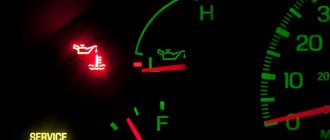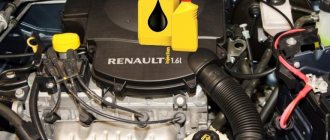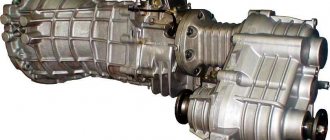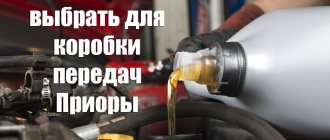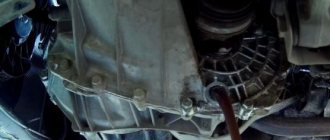How much oil should be poured into the engine
It is impossible to give a definite answer to this question. Vehicles of different manufacturers and brands have their own lubrication system design. In addition to the crankcase, the oil fluid is located in the pipeline, filter, crankshaft, and other components. How many liters of oil you need to pour into your own engine can be found in the operating manual. This is true when you need to fill the lubricant for the first time. The manufacturer indicates the proper filling rate if the power unit is hollow, just assembled.
After draining the oil solution from the system, some of it remains not drained. This is 300-500 grams of lubricant. It is possible to determine how many liters of oil to pour into a car engine by following the recommendations developed for this. Engines of domestic cars with a volume of 1.8 to 2.4 liters can contain from 3.5 to 4.0 liters of oil fluid. The same imported power units will contain from 4.0 to 4.3 liters of lubricant. To determine how much oil is in the engine, you need to use a dipstick and perform several steps:
- You must initially pour 3.5-3.8 liters of lubricant into the filler neck.
- Wait 2-3 minutes and check the level of the lubricant solution with a dipstick.
- If the value is insufficient, then you need to add 100-200 grams and check the degree of filling again.
The procedure must be repeated until the desired filling level is achieved. When pouring lubricant, you must remember that it is better to add little by little than to immediately overflow. Pumping back the lubricant from the system is a very problematic task. If too much lubricant enters, it will flood the engine parts and components near it. This will lead to foaming of the oil and heavy operation of the power unit. If the filling indicator is less than normal, the rubbing components and parts will quickly wear out.
How do you know when the oil needs to be changed?
Constant oil monitoring allows you to visually determine when an oil change is required. There is still no clear answer when to do this.
When to change the fluid? If there is excessive fluidity of the material or a jelly-like substance, as well as blackening, the appearance of suspended substances, a strange foreign odor, then this moment has arrived. You should also be concerned if the lubricant forms foam or emulsion.
Determine oil level - methods
To find out the amount of oil in a car engine, several requirements must be met. They are mandatory:
- the car must be placed on a level surface;
- the power unit must be cool. If the check is carried out after stopping the vehicle, then you must wait 15-20 minutes. During this time, the temperature of the starting unit will decrease, the pressure in the lubrication system will drop, and the oil solution will drain into the crankcase;
- The lubricant level must be measured using a standard dipstick.
There are marks on the surface of the probe: min and max. They indicate the minimum and maximum permissible filling volume of oil in a car engine. The process of determining the lubricant level consists of the following points:
- The dipstick must be removed from its regular place and the remaining lubricant must be wiped off with a clean rag.
- Install the measuring rod in its original place.
- Remove the gauge again and inspect the oil layer. It should be located between the min and max marks.
- If the lubricant layer is below the minimum mark, then an oil solution must be added to the lubrication system.
- If the lubricant level is above the maximum mark, excess lubricant must be drained from the system.
Nowadays, almost all cars are equipped with computer warning systems for the presence of oil solution and its consumption. It is not recommended to completely trust computer data. Sometimes, especially before and after a long trip, you need to check the lubricant level in the power plant yourself.
What happens if you don't add oil to the engine?
A low level will negatively affect the functioning of the motor. For normal engine operation, the oil pump must provide the required pressure. If there is insufficient liquid level in the pan, then, accordingly, the pump will not cope with its work and pressure drops and oil starvation will appear.
The most loaded part of the engine is the crankshaft. It is made of carbide steel and ground at the point of contact with the plain bearings. Inserts, on the contrary, are made of soft metal and are more susceptible to wear. An oil wedge is created between the liner and the crankshaft journal, lubricant is supplied to it through a special oil channel in the crankshaft body. A decrease in the thickness of the oil film or its absence leads to dry friction and accelerated wear of mating parts.
We recommend
“How to check engine oil: rules and recommendations” Read more
Low pressure in the lubrication system for a long time will lead to fatal consequences. The soft material of the liner will begin to soften due to dry friction and move to the edges of the journal, then it will begin to melt and stick to the crankshaft, after which the liners will rotate and a major engine overhaul will be required. It is better to fill the oil to the required level in a timely manner.
After stopping the engine, the parts will cool down, but the deformed liners will not return to their original shape. Steel parts will suffer less damage, but will acquire characteristic stains of overheated metal.
If the liners still do not turn, then the shift of the metal from the center to the edges will lead to an increase in the gaps in the friction pairs and to a metallic knock during engine operation. It is especially audible when the pistons are moving to TDC. This sound indicates that it is too late to add oil and you need to prepare to disassemble the engine.
In addition to the crankshaft and main bearings, connecting rods also suffer. Their lower head overheats, and the metal loses strength if the lubricant is filled below normal. The bolts securing the connecting rod cover are also affected. As a result, the connecting rod may break or the bolts may break. In any case, the consequences will be the most dire. A piece of connecting rod, falling into the space between the cylinder wall and the rotating crankshaft, pierces the wall of the cylinder block right through. The severed part falls into the sump and is pressed by the crankshaft counterweight against the cylinder block sump, puncturing or deforming the crankcase.
Even if there are no devastating consequences, the results of low oil levels will still be unpleasant. A decrease in pressure in the oil line will lead to poor spraying of lubricant onto the cylinder walls and the entry of destruction products (metal particles) into the working chamber. As a result, scoring marks form on the cylinder walls.
Another sign of insufficient levels is the so-called “oil mist”. It is created by rotating engine parts if lubricant is filled below normal. Oil droplets are broken into tiny particles, forming a suspension in the internal cavities. All parts are covered with a layer of oil and have a dirty appearance. This is especially visible at the bottom of the drive. If you notice such symptoms, get ready to add oil.
Intervals when you need to replace
The service book for the vehicle specifies the mileage after which the lubricant solution must be replaced. In the absence of intense operating conditions, driving on the highway outside the city, the mileage between lubricant changes can be up to 15,000 km. Operating vehicles in city traffic will reduce mileage to 9000-11000 km. But these data are not completely accurate, since the condition of the lubricant is influenced by several factors, which include:
- Type and quality condition of the fuel being filled.
- Power plant volume.
- The type of lubricant that was previously filled and its condition.
- The number of hours worked by the engine.
- Technical condition of the vehicle.
- Vehicle operating conditions and power plant operating modes.
These factors can change the quality of the lubricant. Loss of its characteristics by the lubricant will lead to rapid wear of the power plant. In such a situation, an analysis of the oil solution carried out in laboratory conditions can give an accurate answer about the quality of the lubricant and the need to replace it.
Why does the engine “eat” oil?
How many liters of oil a car consumes primarily depends on the engine size: powerful cars with 6- or 8-liter engines can “lose” up to 1 liter per 1000 km, but for ordinary city sedans or small cars this is not normal. If the technical condition of the fuel system is in order and there are no leaks, the cause of increased consumption may be:
- Long downtime - while the machine is not in use, condensation inside the motor reacts with technical fluids and damages its surface.
- Prolonged operation of the engine at idle speed.
- Frequent starting (for example, in traffic jams).
- Transporting heavy loads - increased load on the power unit leads to thickening and oxidation of the lubricant.
- Driving on bad gasoline, which does not burn completely and mixes with oil.
Express replacement of lubricant using a vacuum leaves a lot of waste in the system. Repeating this procedure frequently will damage the engine.
The need for replacement according to engine hours
The initial data is the stable average speed of the vehicle in the city and the manufacturer's recommendations for changing the lubricant. Let's say the speed in the city is 40 km/h, and the factory recommendations for replacement are 15,000 km.
To calculate engine hours, you need to divide the distance by the speed limit. In this situation, 15000/40=375 m/h. The obtained value means that after 375 operating hours of the power plant it is necessary to change the oil.
The API international standard has developed a summary table for replacing oils, depending on their type and service life.
| Type of oil solution | Operating hours |
| Mineral | 130-150 |
| SyntheticARI SJ/SHAPI SL/SMPolyalphaolefinsEsters | 230-250320-350370-400430-450 |
| Semi-synthetic | 230-250 |
How to change the oil yourself?
The oil has its own permanent place under the hood, shaped like a canister and connected to the engine with hoses. When a spark is supplied to the combustible mixture, oil is pumped from the container into the engine crankcase, where it fills all the space, washes the moving pistons, cools the internal combustion engine, and flows heated into the sump, from where it returns again to the container, where it mixes with cold oil and cools. A kind of circulation of oily liquid occurs. It is because of this circulation that the volume of oil to be replaced in the engine exceeds the capacity of the car engine itself.
If the oil movement system is well-functioning, the seals and filters do not leak, then the oil volume remains unchanged for a long time. But sometimes leaks appear due to worn out seals, poorly connected hoses, or a loose drain hole, and the fluid level drops. Accordingly, the pressure drops, and you have to constantly top it up.
The crankcase has 2 holes - a drain, which is located in the bottom, and a filler, through which it is filled.
It is not recommended to perform any manipulations with the oil immediately after turning off the engine, because it will be very hot and you can get burned by it. Before draining the oil product from the crankcase, or performing repair and maintenance work, the engine must also cool down.
But still, to reduce viscosity and improve fluidity, it is desirable that the oil be tolerably warm. When the engine is cold after being idle, it is worth starting it for a short time.
It is better to change used oil on a lift or in a pit. Please note that on most new cars, especially foreign cars, the engine is protected from above by a casing. It must be removed before starting work. At the bottom, the metal casing protecting the oil pan is removed.
The oil filler cap is unscrewed from above. This is necessary so that a vacuum does not form in the crankcase, and the air penetrating into the container pushes out the drained liquid. Place a convenient container (for example, a small bucket) under the crankcase drain hole, and unscrew the drain hole cover. And while the waste oil product is drained, you can unscrew the oil filter. Keep in mind that a small amount of waste oily liquid will also leak out from under the filter; place some kind of container under it as well.
The oil will drain for 10-12 minutes. Take your time. Allow the waste fluid to drain completely. Then pour in about 0.5-1 liters of fresh oil, and let it flow through the system, washing away the remnants of the old one. When all the liquid has flowed out, screw on the drain cap, set the bucket aside, install the oil filter and pour new oil through the funnel, previously purchased at an auto parts store.
Important. If you change the oil filter, be sure to pour a little oil into it so that the engine does not experience oil starvation in the first seconds of operation. When installing the new filter in place, do not overtighten so as not to damage the rubber seal.
After you fill in the oil, replace the casings and check the level with a dipstick, start the engine for 5 minutes, let the lubricating fluid fill the entire volume. Then check the level again with the dipstick. If it is lower, top up and tighten the oil filler neck tightly. Pay attention to whether there are any leaks under the machine from the filter or drain hole.
Next, you will find out how much oil you need to fill in the engine of various models and brands of cars.
Need for replacement due to fuel consumption
The initial data should be fuel consumption per 100 km of movement according to passport data and actual. For example, according to the passport, consumption is 9 liters per 100 km, but the actual consumption is 11 liters. According to the passport, the oil change should be carried out every 15,000 km of vehicle movement.
Fuel consumption is calculated using the proportional method for passport and actual data separately. For passport data: 15000x9/100=1350 liters. For actual data: 15000x11/100=1650 liters.
The actual distance through which new oil must be filled is calculated by a similar proportion: 1350x15000/1650= 12270 km.
Each method can be used for any vehicle. It is only necessary to record the data at the moment of pouring lubricant into the motor.
How much oil does it take to change?
Changing the oil in the Renault Logan 1.4 and 1.6 engine
Before you fill your car with oil, you need to know how much oil is needed. You can find this information:
- in the instruction manual;
- from a service specialist for a specific car brand;
- through a request to the official representative of the brand, etc.
In addition, information about tolerances and requirements for mixtures will not be superfluous. Plus, it’s worth considering some nuances when replacing fluid:
- the machine must be on a level surface;
- Before draining the fluid, the engine must be warmed up;
- It will not be possible to completely remove the mixture by draining after opening the plug in the pan or by draining the oil through the filler neck;
- Before replacing the oil filter, you should wet the filter element by pouring a little oil into it.
One more point: the volume indicated in the manual is complete. That is, this amount is poured into the assembled engine. But, if the engine has already been used, the amount of lubricant will be less. Taking into account the above nuances, about 0.5 liters of mixture may remain in the engine. Accordingly, it is impossible to add the full volume specified in the instructions.
After replacing the fluid, you should monitor its level using a dipstick. Or using electronic sensors that are equipped with some brands of cars. The probes have minimum and maximum marks. And the optimal mixture level is considered to be between these indicators. If the engine is worn out or has increased consumption, then some owners deliberately exceed the level by 1...1.5 cm, but do not bring it to the maximum level.
Let's sum it up
In order to determine how much oil to pour into a car engine, you must follow several recommendations:
- Choose a car oil for the vehicle that will be constant throughout its operation. The lubricant must be selected taking into account the operating conditions of the vehicle.
- If the vehicle is actively used, check the oil fill level using a dipstick at least once every 3-4 days.
- Monitor the interval between runs when replacing the lubricant.
- Fill the engine with lubricant in accordance with technology. Do not underfill or overfill the solution.
- If you lack experience, knowledge or doubt, contact a service station that has the necessary equipment. Specialists will carry out the necessary work on the engine, regardless of whether it is diesel or gasoline.
Compliance with the recommendations guarantees long-term operation of the power unit.
What is machine oil for and how much to fill?
To accurately calculate how much oil to pour into the engine, it is necessary to take into account the make of the car, engine size, as well as the operating characteristics of the car.
Main functions of machine oil
The presence of lubrication in the lubrication system is a vital necessity for a car; engine oil helps protect the parts of the power unit from:
- dry friction;
- corrosion;
- overheating;
- chemical reactions that occur during fuel combustion.
In addition, the oil removes mechanical friction products (metal shavings), as well as soot and carbon deposits that form in the cylinders from the engine.
Long-term driving with an acceptable but very low amount of oil also reduces engine life.
Required volume of lubricant in a passenger car
The easiest way to read the exact data on how many liters of oil to pour into the engine is in the documentation for the car. If the manual is lost, you can get information from a service center or on car enthusiast websites.
Approximate amount of lubricant for a 1.8–2.4 liter engine:
- VAZ and other Russian cars - from 3.3 to 4 liters;
- foreign-made cars - from 4 to 4.3 liters.
For Lada Grant and West with a 1.6 liter engine with a manual transmission, 3.2 liters of oil are required, with an automatic transmission - 4.4 liters, and the amount of oil in the KamAZ lubrication system is about 30 liters.
The engine oil filling volume, which is written in the manufacturer's manual, refers to a completely empty tank of a new car. In fact, even if you completely empty the fuel system, about 400 ml will still remain inside. Therefore, it is recommended to fill in 0.5 liters of lubricant less than stated, and gradually add the rest , checking the level with a dipstick.
Table of the ratio of the volume of the power unit and the required amount of lubricant:
Self-monitoring of oil level
Even if the car is equipped with electronic systems that monitor the lubricant level, you should not completely trust the car’s readings. You should periodically check the lubricant level yourself, especially after a long trip or before it.
When using the machine actively (especially in urban conditions), it is recommended to check the oil level every 3-4 days.
You can find out the current volume of oil in the engine using a special dipstick located under the hood.
Checking the lubricant in Volkswagen Polo.
To measure the level correctly, you should:
- Place the vehicle on a strictly horizontal surface (the tilt of the body will affect the accuracy of measurements).
- You can only check the oil level when the engine is cool - while the temperature inside the internal combustion engine is high, the pressure in the lubrication system remains high, and not all the liquid flows into the oil pan. Therefore, if the engine has just stopped, you need to wait about 20 minutes before starting the measurement.
- Remove the dipstick and wipe it with a clean cloth.
- Measure the oil level using a dipstick.
- Wipe the instrument again and repeat the measurement again.
- If the lubricant level is below or slightly above the Min mark, add what is missing.
If during replacement a few drops fall on the body of the power unit, they should be thoroughly wiped off with a cloth or napkin.
Optimal lubrication level in the internal combustion engine.
You should only check how much oil is in the engine with a clean dipstick. If you wipe it with a loose or dirty cloth, lint or small debris may remain on the surface and get into the engine.
What is the danger of underfilling lubricant?
Insufficient oil volume in the engine leads to overheating, as well as dry friction and wear of engine parts and, as a result, rapid failure of the power unit.
Signs of low engine oil:
- noisy engine operation;
- extraneous sounds from under the hood;
- increasing the operating temperature of the power unit;
- turning on the cooling system more often than usual.
For cars with high mileage, the amount of lubricant should be checked as often as possible (for example, after each refueling) - when the light on the dashboard lights up for insufficient oil pressure, it may already be too late to top it up.
What if you pour it in excess?
Excessive amount of oil in the engine is no less dangerous than its deficiency, and can also damage the engine. Excess lubricant will provoke:
- filling spark plugs;
- foaming of the oil due to rotation of the crankshaft, as a result of which the engine will begin to stall;
- carbon deposits will appear inside the engine;
- fuel consumption will increase by 2–3%;
- the content of harmful substances in the exhaust will increase;
- Excessive volume will squeeze out the seals and break the tightness of the system.
Filling spark plugs.
It is forbidden to check the lubricant level or add it while the engine is running - this may result in boiling oil coming into contact with your face or body.
Key oil indicators
The indicator that is a characteristic of the oil is called viscosity, which depends on the air temperature - in the case of a cold start in the winter and up to the maximum temperature load in the summer. Every car driver should understand what kind of oil to pour into the engine. But, at the same time, it is worth understanding that the product itself is not always to blame for the appearance of defects. For example, synthetic oils have high fluidity, which means it is easier for it to seep through loose oil seal connections. This defect does not indicate its aggressiveness, but indicates wear on the working edge of the cuff, through which any oil can leak. For engines of outdated design, the use of synthetics is not provided.
- For a new engine, it is recommended to use a product of SAE 5W30 or 10W30 classes all year round;
- For a technically sound engine - in the summer season SAE 10W40, 15W40 in the winter 5W30 and 10W30, and in any season SAE 5W40;
- For an old engine - in summer SAE 15W40 and 20W40, in winter SAE 5W40 and SAE 10W40, for any season SAE 5W40.
How many liters of oil do domestic car engines require?
If you can’t spoil the porridge with oil, then the car engine is a very capricious device in this regard. If the oil product is not added to the crankcase, the pump will not pump fully, and some of the cylinders will be dry. If you overfill it, the spark plugs will flood, the crankshaft will foam, causing the engine to stall. Or it won't start at all.
Most engines are picky about trying to mix different brands. Most often, such combinations lead to disastrous consequences, since additives added by manufacturers of different brands to improve the properties of oils react with each other, and the result of such reactions is unpredictable. As a result of chemical reactions of additives, viscosity deteriorates, an insoluble precipitate is formed, which negatively affects the lubricating properties and clogs the oil filter.
The volume of oil in the engine is 1.5-2.5 engine volumes, depending on its model and system.
Changing engine oil in GAZ cars
A veteran of the domestic automotive industry, the GAZ 21, although rare, is still found in its native open spaces. This car probably consumes the largest amount of lubricating oil - 5.5 liters.
Rolled off the assembly line of the Gorky Automobile Plant, it was replaced by the more modernized and elegant GAZ24, which was produced
- with engine type ZMZ-D24, and ZMZ-2401 in 1970-1986 with an engine capacity of 2.4 liters, requires 6 liters of oil to be poured into the engine;
- The ZMZ-2424 engine, twice as powerful as the previous ones and produced in 1985-1988, requires 8.7 liters to operate.
We recommend: How often should you change the air filter in your car?
The ZMZ 406 engine, developed in 1993-1996, which is installed on GAZ-3105, 31105 and some GAZelles, requires 6 liters of engine oil.
The Volga has always been considered a representative, elite car; it was the most spacious of the passenger cars of the Soviet (and now Russian) automobile industry.
This car is distinguished by its solidity and reliability.
Oil in VAZ car engines
But when the country needed inexpensive cars accessible to ordinary workers, the AvtoVAZ plant appeared. The car itself is half the weight of the compact Volga, which means its engine is also more economical.
The very first model of the Zhiguli GAZ-2101, popularly nicknamed the “penny”, requires 3.5 liters of oil. For “two” and “three”, 3.5 liters is also enough.
As for the most popular Niva, which has been in production for 40 years, over the years this SUV has been equipped with engines of different sizes.
The oil volume for replacement in engines with a capacity of 1.6 and 1.7 liters is 3.75 liters. To change the oil in this car, a 4-liter canister will be enough. But an engine with a volume of 1.9 liters will already require 4.2 liters. A complete oil change on a Niva should be done once a year, or every 10 thousand kilometers.
The picture shows one of the latest models of an AvtoVAZ SUV, and it is equipped with a 1.7-liter VAZ 21214 engine. When leaving the assembly line, LUKOIL LUX mineral water with a viscosity of 10W-30 or 10W-40 is poured into the crankcase. This car requires 3.7 liters of petroleum product.
One of the latest models to penetrate the country's car markets, and at the same time, not very smooth roads, is the Lada Vesta.
In different trim levels, 3 different engines are installed - VAZ 21129, VAZ 21179 with a volume of 1.6 and 1.8 liters and a Japanese Nissan HR16 DE with a chain instead of a timing belt and a capacity of 1.6 liters. VAZ 21179 and the Japanese engine require 4.4 liters versus 3.2 for the VAZ 21129.


